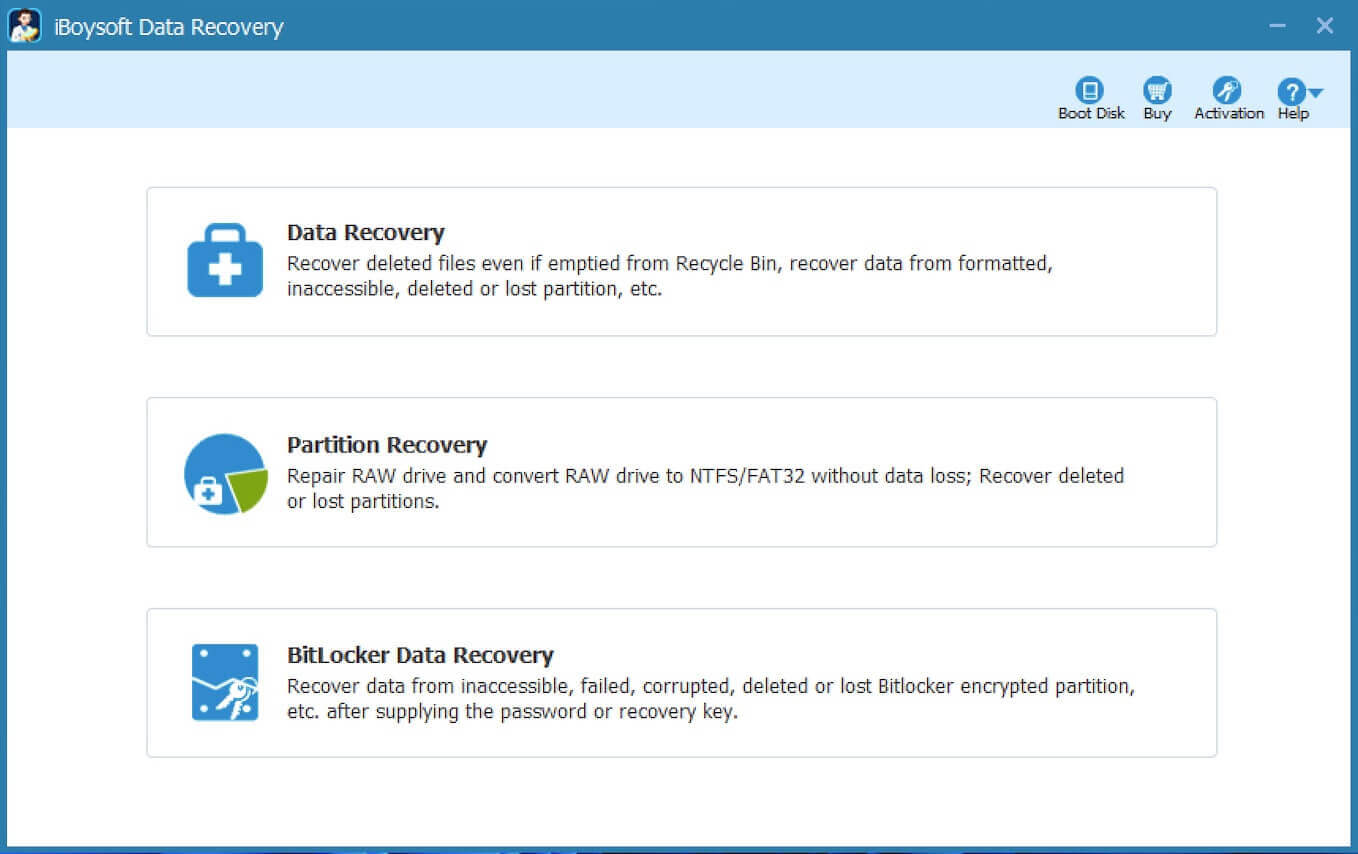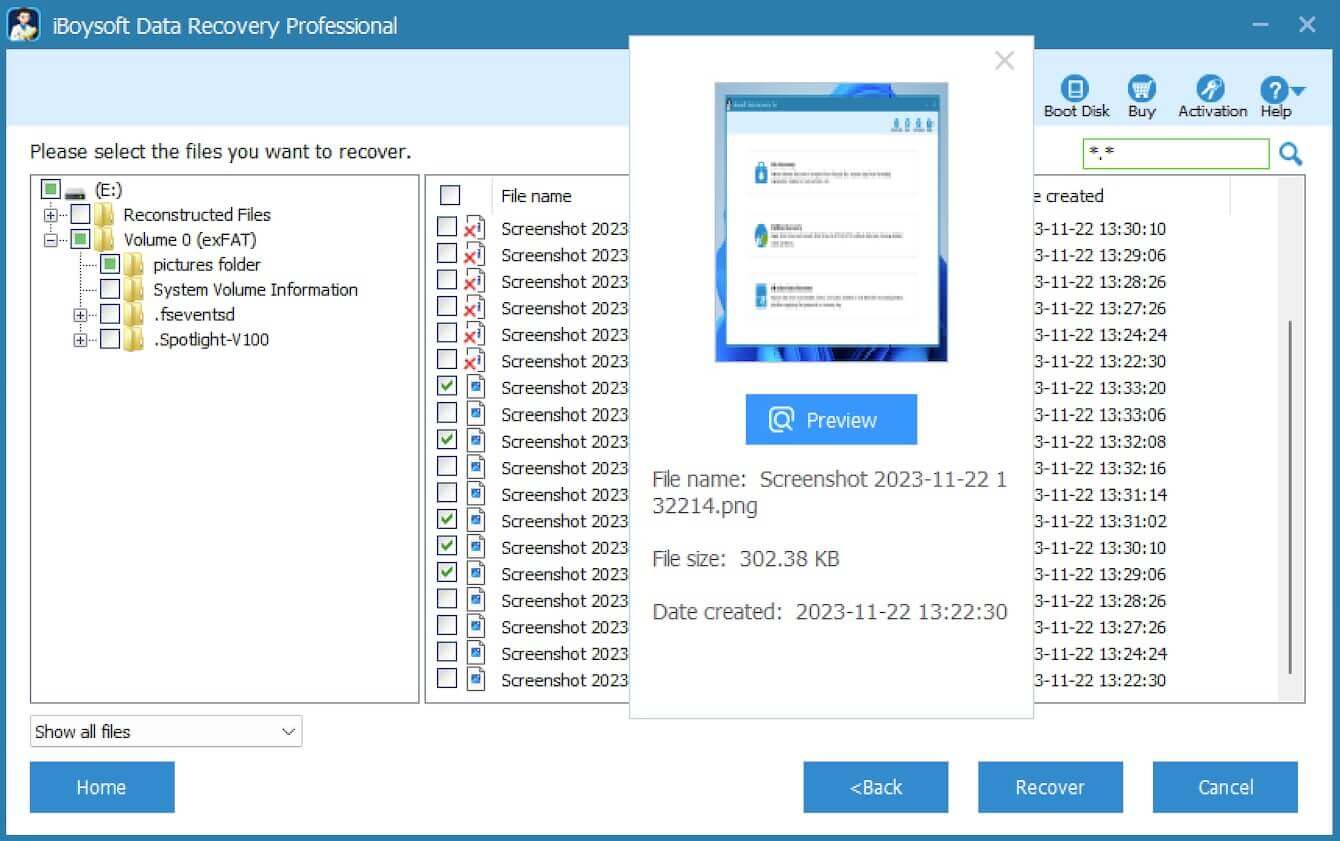Written by
Yuri ZhangSummary: This article will show how to recover deleted photos and do photo recovery deleted photos from SD cards, USB flash drives, external hard drives, etc. whether you are using Windows or Mac system.

The photos can be stored on an SD card, USB flash drive, external hard drive, hard drive built-in the computer, mobile phone, and other storage device.
One of the most important reasons users love to take pictures with their digital cameras or mobile phones is that pictures can help them capture beautiful scenery and record unforgettable moments.
Nowadays, digital cameras and mobile phones are no longer a luxury. However, many users have encountered data loss from digital cameras and mobile phones and want to recover deleted photos. Now let's explore the way to deleted-photo recovery.
Common photo loss scenarios
There are several common photo data loss scenarios:
1. Mistakenly deleted the photos
It is a common photo loss scenario in which the user mistakenly deletes the photos from a digital camera or mobile phone. The photos that get deleted aren't usually truly deleted but are instead just hidden, waiting to be overwritten by new photos, you can take advantage of this fact and recover deleted photos you want back.
After mistakenly deleting precious photos from a digital camera or mobile phone, we need to stop this SD card immediately and then find a photo recovery software to recover deleted photos.
2. Virus attack
Virus attacks can also cause photos lost from the digital camera, mobile phone, USB drive, flash drive, external hard drive, etc. even corrupting the photos and making the photo recovery work worse.
3. Mistakenly formatted the digital storage device
After the digital storage device was mistakenly formatted, it still is possible to recover lost photos by using professional photo recovery software.
In order to avoid secondary damage to the lost data, please stop the mistakenly formatted digital storage device immediately and start photo recovery deleted photos work at once.
4. The digital storage device is not accessible
The digital storage device is not accessible by the computer. Maybe the file system of the digital storage device is corrupted, or the digital storage device is not safely ejected after using it. In this situation, photo recovery deleted photos is still possible.
5. The storage device error
The camera's storage device is mainly an SD card. If the SD card is faulty, the photos will be lost, or some photos cannot be read normally. For example, the digital camera always reminds the SD card is not formatted, and the photos were inexplicably lost.
6. Hardware issue
The digital storage device is not recognized by the computer, for example, the digital storage device showing incorrect capacity in Disk Management. Windows is unable to complete the format on the digital storage device. The digital storage device is not listed in the device manager.
If the digital storage device has hardware issue, hardware issue is beyond of any photo recovery software, please send it to a local data recovery service for help.
Share these insights and see the corresponding solution.
Photo recovery software
iBoysoft Data Recovery is a free photo recovery app that can recover deleted/lost photos/pictures from SD cards, USB drives, flash drives, hard drives, external hard drive, etc. on Windows and Macs. Besides recovering deleted/lost photos, iBoysoft Data Recovery can also recover lost data from formatted, RAW, inaccessible, corrupted storage devices, etc.
How to recover deleted/lost photos?
The first absolute rule you need to know is - do not write any data to the digital storage device after data loss, otherwise, you will lose the data forever once they are overwritten.
Solution 1: Recover deleted/lost photos on a Windows computer
Step 1: Connect the digital storage drive (USB drive, SD card, external hard drive, memory card, etc.) to your Windows computer.
If it is a digital camera, you need to take the SD card out from the digital camera and then connect it to your Windows computer via an SD card reader.
Step 2: Download and install iBoysoft Data Recovery software on your Windows computer.
Step 3: Launch iBoysoft Data Recovery software and choose Data Recovery module.
(If the digital storage device is BitLocker encrypted, please choose BitLocker Recovery module to recover lost data from BitLocker encrypted drive.)

Step 4: Select the digital storage device, then click Next to scan lost/deleted photos.
Step 5: After the scan completes, please double click the found photos to preview (or select Save session option from Help menu to save the scan result for continuous recovery next time).
Step 6: Click Recover to start photo recovery deleted photos.

Isn't it foolproof and effortless to garner your deleted photos? Share and practice it.
Solution 2: Recover deleted/lost photos on a Mac computer
Step 1: Connect the digital storage deive (USB drive, SD card, external hard drive, memory card, etc.) to your Mac computer.
If it is a digital camera, you need to take the SD card out from the digital camera and then connect it to the Mac computer via a SD card reader.
Step 2: Download and install iBoysoft Data Recovery for Mac software on your Mac computer.
Step 3: Launch iBoysoft Data Recovery for Mac software.
Step 4: Select the storage device and then click Next to scan the lost/deleted photos.
Step 5: After the scan completes, please check/preview the found photos: iBoysoft Data Recovery for Mac can preview (click the Eye icon next to the file name) the documents, photos, videos, audio, etc.
Note: If the found photos are not ok, please return to the main interface and try this solution: click Preferences in the toolbar of iBoysoft Data Recovery for Mac, check the "File types" option, select the SD card, and then check deep scan option to scan again, please check the photos in (Reconstructed files) folder after the scan completes.
Step 6: Click Recover to start photo recovery of deleted photos.
Related articles:
Cloning a BitLocker-Encrypted Drive: How to Do It Right
Kill Stubborn Processes on Windows 7/8/10/11 with Confidence
Duplicating a Directory/Folder/File Mightier Than Usual
Spread this article if you find it helpful!
